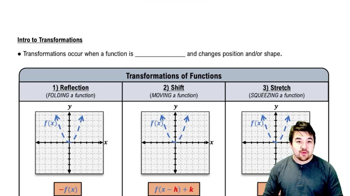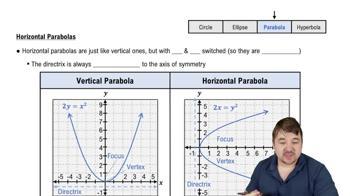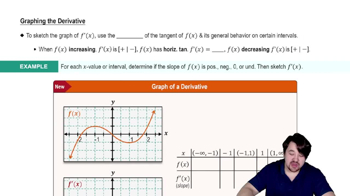The accompanying figure shows the graph of a function f(x) with domain [0,2] and range [0,1]. Find the domains and ranges of the following functions, and sketch their graphs.
<IMAGE>
c. 2f(x)
 Verified step by step guidance
Verified step by step guidance Verified video answer for a similar problem:
Verified video answer for a similar problem:



 5:25m
5:25mMaster Intro to Transformations with a bite sized video explanation from Patrick
Start learning